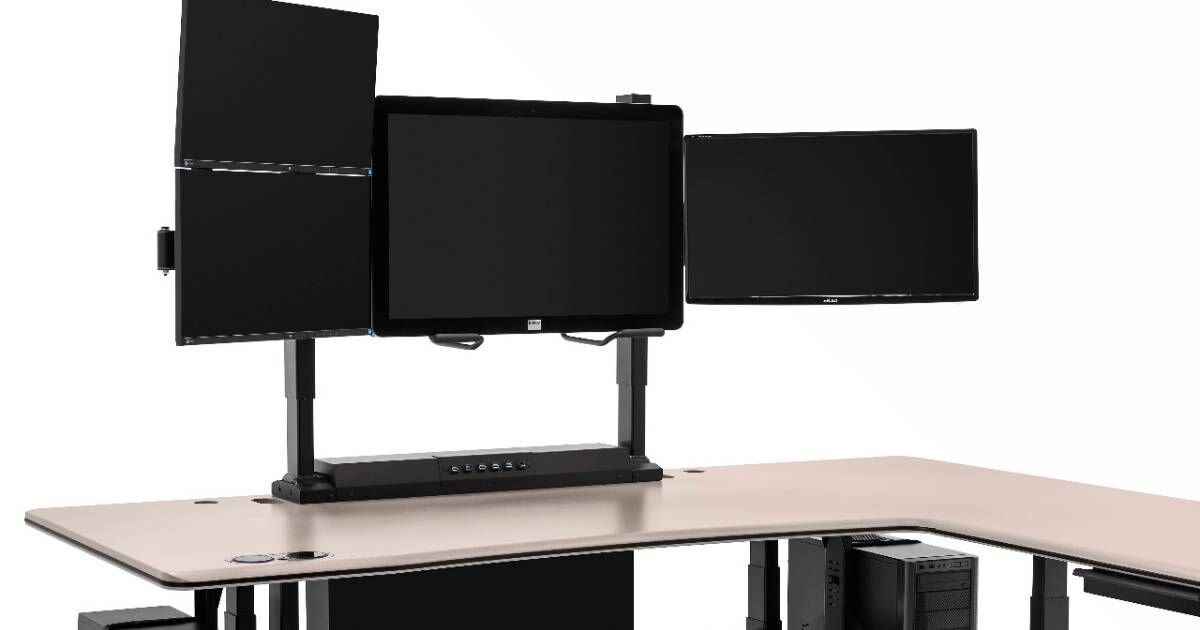
We collect basic website visitor information on this website and store it in cookies. We also utilize Google Analytics to track page view information to assist us in improving our website.

Radiologists play an important role in healthcare. Due to the nature of their work, they spend hours scrolling through screens and long case files with hundreds of images putting themselves at risk for injury or discomfort.
This can be doubly true if the radiologist has physical limitations that require additional work accessibility. Several accessibility issues come with the job, including:
Radiologists play an important role when it comes to healthcare. They spend hours reviewing images and providing diagnoses and reports due to the nature of their work, which often requires them for a long time, scrolling through screens and long case files with hundreds of images, putting them at risk for repetitive stress injuries.
These days, radiology is operating around the clock, providing a top-of-the-line edge in the field. However, this has resulted in a greater work demand for radiologists, a population experiencing shortages, perhaps partly due to their aging population.
Many radiologists are Baby Boomers on the brink of retirement, creating a need for younger professionals to fill their roles. Additionally, medical imaging remains crucial for numerous diagnoses, and as the population ages, the demand for radiologists will continue to grow due to the increased need for medical and imaging services.
To accommodate not only the demand for these services but also the needs and accessibility of radiologists, companies such as RedRick Technologies provide accessible ergonomic workstations designed with radiologists in mind. Our cutting-edge technology is designed to reduce mental and physical strain common in radiology.
Today, our experts are going to explore accessibility in the workplace, the importance of accessible ergonomic workstations, and the needs of radiologists.
RedRick Technologies has been working with radiologists in mind for over 20 years and has observed a wide range of needs that radiologists have.
Our experience in the industry has given our team critical insights into the often overlooked, including the need for accessible, ergonomic workstations for radiologists, including those with physical limitations. This includes radiologists who already have pre-existing conditions, those who have surprise health issues, or those who develop long-term problems from repetitive movements.
Currently, 82% of radiologists aged 45 and over, while 53% are aged 55 and over. This makes accessibility even more essential. As such, practices need to make sure that they optimize radiologist efficiency by creating a supportive and ergonomic environment, not only to support current radiologists but also to attract new ones for the long term.
Ergonomic workstations and adapted tech have paved the way for comfortable and more inclusive work environments, ensuring those with physical limitations or who experience difficulties while working can be successful in their careers. For example, radiologists who suffer from arthritis could suffer to the point that working regular hours could be impossible.
According to the National Institute of Health, arthritis causes joint pain, swelling, physical weakness, and reduced mobility. This can lead to issues sleeping and overall physical exhaustion. Repeated strain on these joints can be so painful that conducting oneself effectively at work can be difficult—but not impossible—to address.
By making some modifications to their workstations, radiologists can alleviate their limitations and continue their successful careers.

RedRick Technologies has extensive knowledge when it comes to optimizing radiology reading rooms. This experience has allowed our team to develop products that cater to the needs of radiologists, able-bodied or not. Our solutions are designed to be completely customizable to fit the unique needs of the individual, ensuring they're fully supported and able to provide critical patient care.
Workstations should never be an afterthought. They are vital in the diagnostic and healthcare industry and must be designed to fit the needs of the people using them. Just as a surgeon needs an optimized operating room, a radiologist requires an ergonomic and carefully crafted work environment that supports their physical needs and limitations. If you’re interested in learning more, book a demo with us today.
Ergonomics doesn’t just consider physicality but also cognitive aspects of ergonomics.
Physical ergonomics involves examining the physical activity of reading studies to make sure the accessible ergonomic workstation is made as comfortable as possible. This aims to reduce repetitive stress injuries and accommodate those with mobility limitations or other physical ailments.
Cognitive ergonomics focuses on designing work environments, tools, and systems to align with the cognitive abilities and limitations of the radiologist. This enhances the efficiency, accuracy, and overall well-being of radiologists.
However, let’s be specific about some of the issues radiologists can face:
When it comes to just operating a computer mouse or operating various other technologies, a radiologist's hands are almost always moving and are essential to doing their jobs and doing them well. To address hand mobility issues or limitations, ergonomic workstations must be designed to avoid promoting repetitive strain injuries. This can come down to the workstation's core design, which enables systems to utilize more voice control options to eliminate the need for hand-operated technologies.
Many workplaces have provided upgraded workstations or even work-from-home options, meaning the reading environment for radiologists has even more flexibility. Many radiologists prefer a standing workstation - a key feature provided by specialists such as RedRick Technologies. This allows them to avoid sitting for long periods. Every one of our carefully crafted pieces is height-adjustable, ensuring radiologists have the accessibility features they need to work comfortably.
Radiologists spend multiple hours examining detailed medical imagery typically across multiple monitors, which can cause serious strain on the eyes. Prolonged screen time is one of the main issues radiologists face when it comes to struggling with overall burnout. This is caused by inadequate lighting conditions, including glare from screens or poor ambient lighting, which forces the eyes to have to work harder. The intense and varying levels of contrast involved require the eyes to constantly adjust, adding to overall feelings of burnout or fatigue.
Cognitive burnout, however, comes from the mental effort required to analyze complex medical imagery accurately. With the population of radiologists dwindling (see above), the volume of cases one radiologist handles can quickly overwhelm their cognitive capacity. This is compounded by the nature of their work which requires them to be highly accurate and focused at all times. Time pressure can also add to cognitive load, as radiologists must provide the required turnarounds and accurate readings to ensure the best patient care.

For imaging providers, it's crucial to establish a system where radiologists with disabilities or limitations can easily communicate their needs and have those needs addressed, and promptly. This is something every institution needs to strive for as the population of existing radiologists continues to age, not only to ease their work efforts, but to spread a new, innovative work culture that appeals to new radiologists in the future.
It’s essential to have radiologists be a part of the conversation to ensure they can have the customized workspaces required to make their jobs easier and more comfortable.
Maintain this open line of communication beyond personalized onboarding and in-depth training through regular follow-ups. This creates a continuous feedback loop where questions, concerns, and challenges can be addressed. Whether it's a technical refresher, a custom software adjustment, or a customized workstation - trust the professionals to get the work done. RedRick Technologies is at the forefront of these ergonomic solutions. Book a demo with us today.